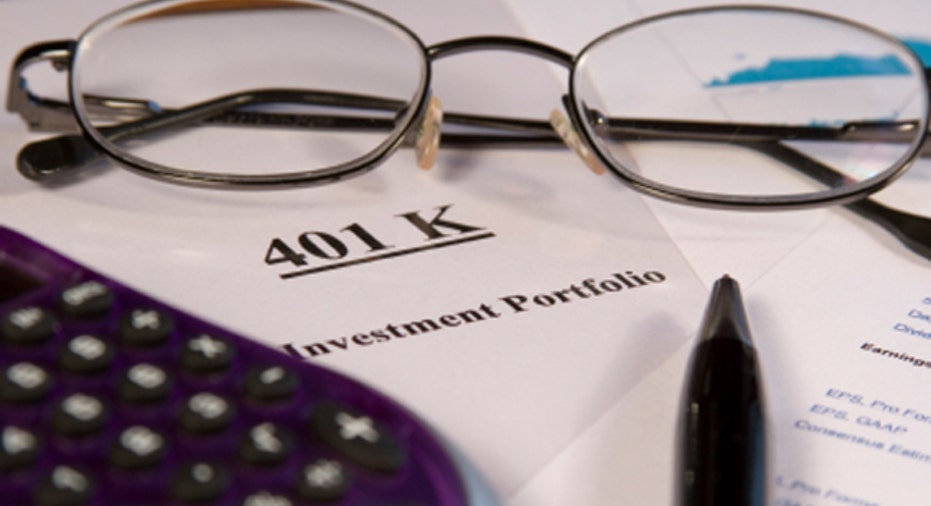The $19.4 Trillion Minute

WASHINGTON – There comes a moment in a retiring worker's life when he has to decide what to do with the money in his 401(k) plan.
He can leave it there. If he's moving to another job, he can transfer it to his new retirement plan. He can take out the cash and spend it. Or he can transfer it directly into a personal individual retirement account (IRA) at a financial institution and continue to reap tax benefits for the money.
Put all of those moments together and there is a lot of money in play. More than $1 trillion in defined-contribution-plan assets are eligible for distribution every year, reports research firm Cerulli Associates. In 2011, some $307 billion rolled over into private accounts, and that number is expected to grow every year as the baby boom starts heading for the exits. By 2017, more than $450 billion should roll out of defined-contribution workplace accounts into private management annually.
If you add up all the money that was in various workplace and personal retirement accounts at the end of the third quarter of 2012, that's $19.4 trillion, according to the Investment Company Institute. It's no wonder that financial firms are sharpening their sales pitches and the Consumer Finance Protection Bureau is said to be eyeing that space for possible regulation. According to press reports, regulators there have taken to referring to the issue as the "rollover moment."
It's a weighty one for workers who know this pot of money is theirs to protect and live on for the rest of their lives. "Internally, we call it the moment of truth," said Karin Risi, head of Vanguard Advice Services.
"The decision itself can be very overwhelming," Sarah Walsh, vice president of retirement solutions for Fidelity Investments, said in an interview.
You needn't be overwhelmed. Here is what to keep in mind.
-- There's no real urgency. As long as you have at least $5,000 in your 401(k) plan, your company is required to hang on to it as long as you want. You can attend to the other issues around retirement or job change and take the time necessary to research your options.
-- There are reasons to leave your money in your 401(k). Maybe that is why more than $2 of eligible assets stay in workplace plans for every $1 that moves to a rollover, according to Cerulli.
If you are retiring early and want access to your money, know that you can start making penalty-free 401(k) withdrawals at age 55, but you will face penalties on IRA withdrawals until age 59 1/2 (with some technical exceptions). And while the legal language is confusing and varies from state to state, it's not clear that assets in rollover IRAs have the same protection from creditors as defined-contribution-account assets have.
Workplace 401(k) plans, especially at large employers, typically offer solid mutual funds at rock-bottom prices and some automated management, so you may just want to take advantage of that. But not all plans are equally good, so make sure your plan's offerings are what you'd want if you were shopping for investments in the open market.
-- Get advice from multiple sources, or do your own research. Worker advocates worry that the same people giving advice stand to benefit from it. Investment companies like Vanguard, Fidelity, T. Rowe Price Group Inc and TIAA-CREF, and insurance companies like Principal Financial Group and John Hancock all manage 401(k) plans for employers, and also sell rollover accounts and investment products for individuals. They offer "rollover moment" advice to workers too. It's not a huge leap to think they might be directing workers toward their own products.
"Arguably, it's a conflict of interest," says Norman Stein, senior policy adviser for the Pension Rights Center, an advocacy organization. Stein says some companies are better than others at offering independent advice on the rollover decision, depending on their business model. Advisers to smaller retirement plans are more likely to be dependent on product sales and higher fees, for example.
"We are held to pretty high standards. We are providing a service to the plan sponsor and we have to be fair and balanced," said Fidelity's Walsh. "We're not going to promote other financial institutions, but we tell them that there are a lot of providers that provide rollover IRAs."
So, find those providers for yourself. Look for low fees, a broad menu of investment choices, and rollover options that allow you to change your mind without surrender fees. If you don't feel qualified to choose your own investments, listen to the advice you get at work and call a few low-cost fund companies for help. All of the major no-load mutual fund companies mentioned here will walk you through your rollover choices and investment options. You may also want to talk to an independent financial adviser whom you pay by the hour for advice and who will not be looking to manage your money after helping you vet investment companies. Check the Garrett Planning Network () to find one.
-- Don't worry about the paperwork. Virtually every company that takes rollovers will help you accomplish the transfer, so don't favor one place over another because it claims to speed the paperwork. Whether you move your money directly to the same firm already managing your company plan or an unrelated one, it should not take more than a phone call to start the process. You may have to fill out forms and wait a few weeks for the money to actually move, but it's not insurmountable, and it should not take forever. Just...a moment.



















